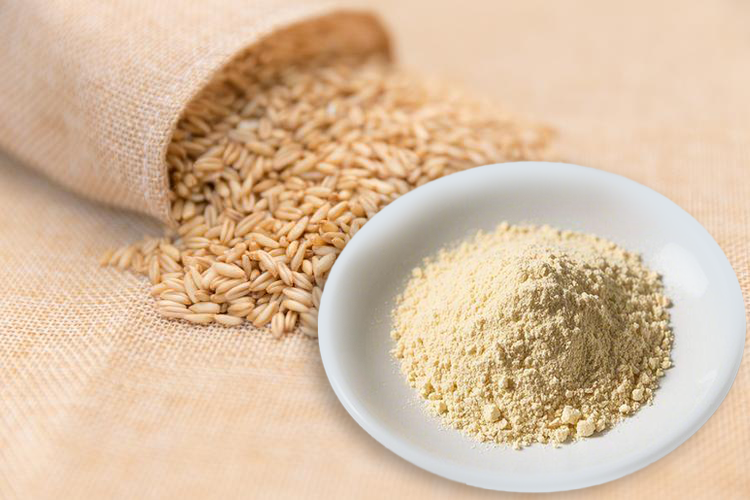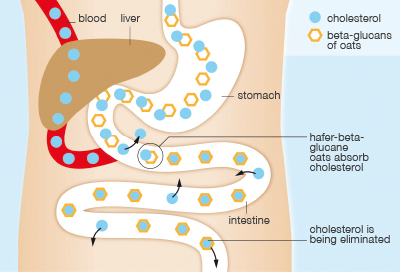Does oat beta-glucan reduce cholesterol?
Beta glucan lowers LDL cholesterol (lethal cholesterol) and boosts immunity. Found in oats, barley, and mushrooms, it works by binding to LDL, preventing absorption. Incorporate foods like oatmeal and barley into your diet or consider supplements for health benefits.
What is Beta-Glucan?
Beta-glucan is a type of soluble fibre found primarily in the cell walls of barley, oats, mushrooms, and fungi. As a soluble fibre, it dissolves in water and is digestible – creating a gel-like substance that coats the digestive system.
The type of beta-glucan that is effective at lowering cholesterol can only be found in barley and oats, with barley providing the highest concentration of beta-glucan by volume. If you’ve ever noticed the sticky texture of oatmeal, it’s the beta-glucan that creates that texture.
Barley beta-glucan has been extensively researched and proven to lower LDL (bad) cholesterol by as much as 24%, making it one of the most effective soluble fibres at lowering cholesterol. Additionally, it is recognized for its ability to:
- Help improve the health of your digestive system
- Improve digestion and regularity
- Improve satiety
- Help regulate blood glucose levels

Cholesterol and its Role in the Body
Cholesterol is a waxy substance that your body needs to build cells.
The human body needs small amounts of cholesterol to carefully build the structures of cell membranes.
HDL cholesterol is known as ‘good cholesterol’ as it plays a crucial role in helping to move the other forms of cholesterol throughout the bloodstream.
On the other hand, LDL cholesterol is classified as bad cholesterol as it causes a build-up within the walls of the blood vessels, which may lead to a clot or blockage.
A blockage in the veins can lead to a heart attack or a stroke.
Cholesterol Issues
The problem starts when there’s too much of the 'bad cholesterol LDL (low-density lipoprotein) floating around in your blood.
This build-up can lead to heart disease and the risk of cardiovascular failure.
A medical study proved that β-glucan from barley decreased levels of total low-density lipoprotein (LDL) cholesterol.
The results of the study state that increasing the intake of barley-containing beta glucan should be a consistent part of approaching your diet to reduce LDL cholesterol.

How exactly does oat beta-glucan lower cholesterol?
1. Arriving at the stomach intestine
Once consumed, oat beta-glucan makes its way from your stomach to your small intestine where it is turned into a gel-like substance.
2. Binding to bile acids
This gel-like substance, surrounds and binds to bile acids (made from cholesterol).
3. Exiting through the digestive tract
These bile acids are not able to be recycled back to the liver and, as a result, leave your body through the digestive tract.
4. Creating new bile acids
Because your body requires bile acids to digest foods, your liver creates new bile acids from cholesterol already present in your bloodstream, thereby lowering LDL and total cholesterol levels.

Why Oat Beta-Glucan is One of The Best Fibres For Lowering Cholesterol
Oat beta-glucan is one of, if not the best, fibres for lowering cholesterol simply due to how effective it is and how easy it is to introduce into your diet.
When people think of soluble fibre, psyllium husk often comes to mind. Psyllium husk is a type of soluble fibre that comes from the Plantago ovata plant’s seeds and is primarily grown in Asia. Psyllium does naturally lower cholesterol but it’s not as effective as oat beta-glucan. 7g of psyllium husk is required daily to lower cholesterol compared to beta-glucan's 3g per day. Additionally, beta-glucan can lower cholesterol to a much greater extent. Psyllium can lower cholesterol levels by up to 7.4% whereas with beta-glucan you can expect to see a reduction of up to 24%.
Additionally, unlike other fibres, beta-glucan does not bulk beyond its own volume in your digestive system which reduces the likelihood of experiencing choking or a blockage in your digestive tract. Because beta-glucan is naturally neutral tasting, additives don’t need to be added for it to be palatable.

How to Introduce Oat Beta-Glucan Into Your Diet
According to researchers and Health Canada, 3 grams of barley or oat beta-glucan taken daily for 4 to 12 weeks is required to naturally lower cholesterol levels.
While you could try and eat whole grain barley or oats every day, an easier way to introduce beta-glucan into your diet is by taking a supplmeent.
![]()
Conclusion
Overall, the evidence that oats can help reduce cholesterol is good. However, beta-glucan is also available in a wide range of other plants, as we’ve seen. So, rather than focusing on oats, variety is key.
Also, there’s good evidence that fiber in general, not just beta-glucan, can help lower cholesterol. And fiber is readily available in fruits, nuts, vegetables, beans, and pulses.
Consuming the prebiotic beta glucan may decrease the risk of cardiovascular disease, certain types of cancer, improve the immune system, reduce inflammation, and spur weight loss. So, add some organic oatmeal to your morning routine.
Sources:
https://www150.statcan.gc.ca/n1/pub/82-625-x/2021001/article/00003-eng.htm
https://www.mayoclinic.org/diseases-conditions/high-blood-cholesterol/in-depth/statin-side-effects/art-20046013
https://nutrastatfiber.com/pages/research
https://pubmed.ncbi.nlm.nih.gov/14963054/.
http://webprod.hc-sc.gc.ca/nhpid-bdipsn/atReq.do?atid=beta.glucane&lang=eng
https://academic.oup.com/ajcn/article/71/6/1433/4729388
https://pubmed.ncbi.nlm.nih.gov/14963054/
https://www.ncbi.nlm.nih.gov/pmc/articles/PMC8408873/
Send Inquiry
Related Industry Knowledge
- Glutathione and Your Skin: The Ultimate Guide
- Beetroot Red: Your Guide to Vibrant Health
- Glutathione Tablets Skin Benefits
- Effects of Creatine Tablets in Different Forms
- Organic Hemp Protein Powder for Weight Gain
- Organic Turmeric Powder Natural Drinks
- How to take mushroom powder?
- Does fucoxanthin help you lose weight?
- What does ergothioneine do for skin?
- Lion's Mane Benefits for Brain Health


